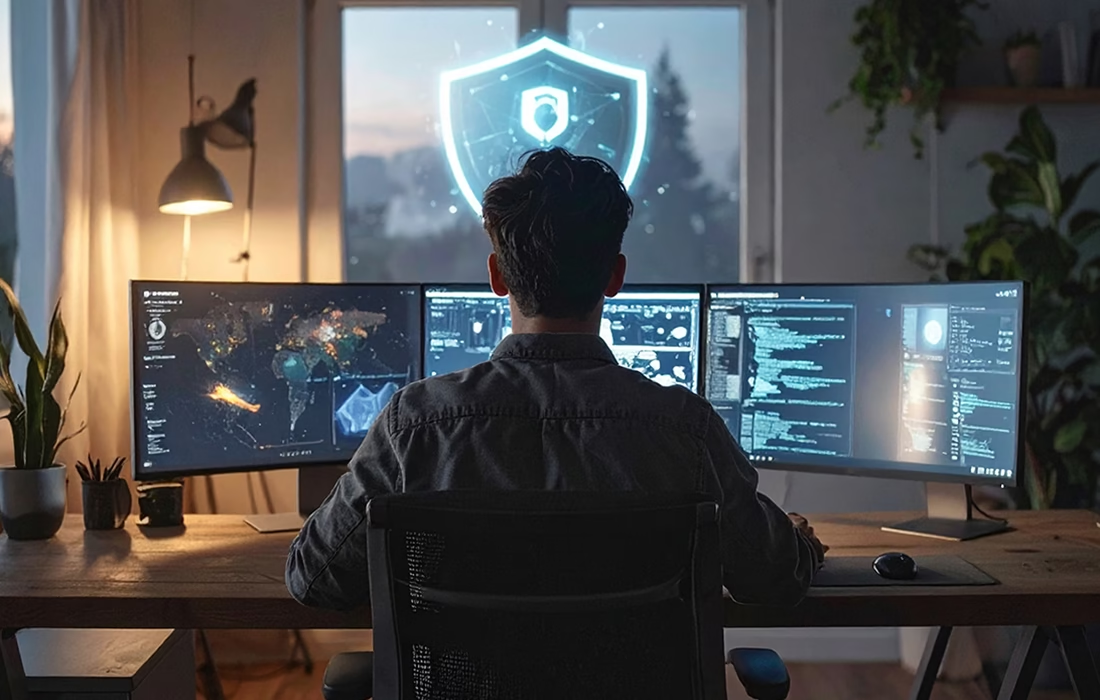Protect Personal Data: 10 Cybersecurity Best Practices

Introduction
Protect personal data from the very beginning. Whether you are checking email, shopping online, or sharing photos, your data is valuable. Following practical steps can help you stay safe. In this guide, we’ll cover 10 cybersecurity best practices to protect personal data, from strong passwords and 2FA to backups and secure browsing habits.
1 — Use Strong, Unique Passwords & a Password Manager
A strong password strategy is essential to protect personal data.
Steps to follow:
- Use long passphrases (12+ characters) combining random words, letters, and symbols.
- Never reuse passwords across important accounts (email, banking, work).
- Use a trusted password manager such as Bitwarden, 1Password, or KeePassXC.
- Avoid saving passwords in browsers on shared computers.
2 — Enable Two-Factor Authentication (2FA)
2FA adds an extra layer of security to protect personal data.
Best practices:
- Use authenticator apps like Authy or Google Authenticator instead of SMS.
- Enable 2FA on email, cloud storage, social media, and banking accounts.
- Keep recovery codes in a secure offline location.
3 — Keep Software, Firmware & Devices Updated
Regular updates close security gaps and are crucial to protect personal data.
Update recommendations:
- Enable automatic updates for OS, apps, and browsers.
- Update router firmware and IoT devices.
- For businesses, use centralized patch management (e.g., Microsoft Intune, WSUS).
- Check release notes for security fixes.
4 — Secure Connections: HTTPS, VPNs & Wi-Fi Settings

Protect the path your data travels to protect personal data online.
Actions to take:
- Always use HTTPS when submitting sensitive information.
- Avoid public Wi-Fi for banking; use a trusted VPN.
- Recommended VPN resources:
- Privacy Guides — https://www.privacyguides.org/
- CISA VPN security tips — https://www.cisa.gov/publication/vpn-security
- Secure home Wi-Fi: WPA3, change default admin passwords, create a guest network.
- Consider DNS services that block malicious domains.
5 — Protect Devices, Enable Encryption & Secure Disposal
Device security is key to protect personal data.
Steps for device protection:
- Enable full-disk encryption (FileVault, BitLocker, mobile device encryption).
- Use strong passcodes and biometric locks.
- Keep antivirus/endpoint protection updated.
- Securely wipe or destroy devices before disposal.
6 — Spot Phishing & Social Engineering
Human-targeted attacks bypass technical measures — spotting them helps protect personal data.
Tips to prevent phishing:
- Verify sender addresses; hover over links before clicking.
- Be cautious with urgent or emotional requests.
- Never provide credentials via email; use official portals.
- Use anti-phishing browser extensions.
7 — Limit Sharing, Review App Permissions & Practice Data Minimization
Sharing less reduces exposure and helps protect personal data.
Data-minimizing practices:
- Audit social profiles; remove unnecessary personal details.
- Revoke unneeded app permissions (location, microphone, contacts).
- Use disposable email addresses for non-essential services.
8 — Backups & Recovery Planning
Backups and a tested recovery plan are essential to protect personal data in emergencies.
Backup tips:
- Follow the 3-2-1 backup rule (three copies, two different media, one offsite).
- Encrypt backups and verify restores regularly.
- Maintain an incident checklist: rotate passwords, enable fraud alerts, and report identity theft.
- Check for exposed accounts: Have I Been Pwned
9 — Secure Your Family & Kids
Protecting household members helps protect personal data for everyone.
Family cybersecurity tips:
- Use parental controls and separate accounts for children.
- Teach kids about phishing and oversharing risks.
- Use a shared family password manager for safe access.
10 — Business Considerations & Regulatory Basics
Businesses must protect client and employee data to protect personal data legally and ethically.
Key practices:
- Enforce company-wide password and 2FA policies.
- Use centralized MDM for updates.
- Document incident response and breach notification procedures.
- Train employees regularly on phishing and secure data handling.
Quick Checklist — Actions to Take Today

- Install a password manager.
- Enable 2FA on critical accounts.
- Turn on automatic updates for all devices.
- Secure home Wi-Fi.
- Back up important files.
- Check inbox for phishing emails.
FAQs
Q: Can a VPN make me anonymous?
A: No, VPNs enhance privacy but don’t provide full anonymity. For higher anonymity, combine with Tor and strong operational security.
Q: Is SMS 2FA safe?
A: SMS is better than nothing but can be hacked via SIM swaps. Use authenticator apps or hardware tokens for important accounts.
Q: How often should I change passwords?
A: Change passwords after a breach or compromise; focus on unique, strong passwords rather than routine rotation.
Q: How can I check if my email was compromised?
A: Use Have I Been Pwned to check if your accounts appear in known breaches.
Trusted Resources & Further Reading
- NIST Cybersecurity Guidelines
- CISA Cybersecurity Resources
- Electronic Frontier Foundation (EFF)
- Privacy Guides
- Have I Been Pwned
Internal links:
Conclusion
To protect personal data, combine strong passwords, 2FA, regular updates, encryption, backups, phishing awareness, and minimal data sharing. Start with the quick checklist, implement one change at a time, and your digital life will be far more secure. Protecting personal data is achievable and essential — it safeguards your privacy, finances, and peace of mind.



